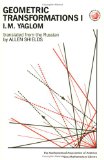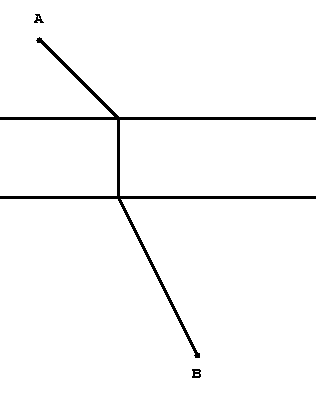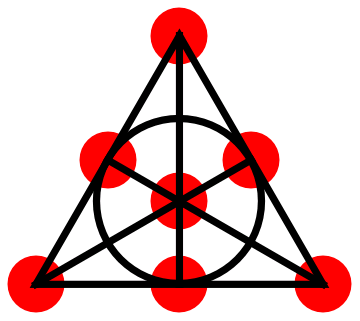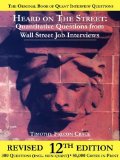Konstantin Knop sent me the following coins puzzle, which was created by Alexander Shapovalov and first appeared at the Regional round of the all-Russian math Olympiad in 2000.
Baron Münchhausen has 8 identical-looking coins weighing 1, 2, …, 8 grams. The Baron knows which coin is which and wants to demonstrate to his guests that he is right. He plans to conduct one weighing on a balance scale, so that the guests will be convinced about the weight of one of the coins. Can the Baron do this?
This being a sequence-lover blog, we want to create a sequence out of this puzzle. The sequence is the following: Let the Baron initially have n identical-looking coins that weigh exactly 1, 2, …, n grams. Then a(n) is the minimum number of weighings on a balance scale that the Baron needs in order to convince his guests about the weight of one of those coins.
The original puzzle can be restated as asking whether a(8) = 1. The sequence is defined starting from index 1 and the first several terms are easy to calculate: 0, 1, 1, 1, 2, 1, 1, 1. Can you continue this sequence?
Let’s look at where ones occur in this sequence:
Theorem. If the weight of a coin can be confirmed with one weighing, then one cup of that weighing must contain all the coins with weights from 1 to some i, and the other cup must contain all the coins with weights from some j to n. Furthermore, either the scale must balance, or the cup containing the 1-gram coin must be lighter.
Proof. What does it mean for the Baron to convince his guests about the weight of some coin with one weighing? From the perspective of the guests, a weighing is a number of coins in one cup, a number of coins in the other cup, and a number of coins not on the scale, together with the result the scale shows (one or the other cup heavier, or both the same weight). For the guests to be convinced of the weight of some particular coin, it must therefore be the case that all possible arrangements of coin weights consistent with that data agree on the weight of the coin in question. Our proof strategy, therefore, is to look for ways to alter a given arrangement of coin weights so as to change the weight given to the coin whose weight is being demonstrated, thus arriving at a contradiction.
First, obviously, the coin whose weight k the Baron is trying to confirm has to be alone in its group: either alone on some cup or the only coin not on the scale. After that we can divide the proof of the theorem into several cases.
Case 1. The coin k is on a cup and the scale is balanced. Then we want to show two things: k = n, and the coins on the other cup weigh 1, 2, …, i grams for some i. For the first part, observe that if k < n, then the coin with weight k+1 must not be on the scale (otherwise it would overbalance coin k). Therefore, we can substitute coin k+1 for coin k, and substitute a coin one gram heavier for the heaviest coin that was on the other cup, and produce thereby a different arrangement with the same observable characteristics but a different weight for the coin the Baron claims has weight k.
To prove the second part, suppose the contrary. Then it is possible to substitute a coin 1 gram lighter for one of the coins on the other cup. Now, if coin k-1 is not on the scale, we can also substitute k-1 for k, and again produce a different arrangement with the same observable characteristics but a different weight for the coin labeled k. On the other hand, if k-1 is on the scale but k-2 is not, then we can substitute k-2 for k-1 and then k-1 for k and the weighing is again unconvincing. Finally, if both k-1 and k-2 are on the scale, and yet they balance k, then k=3 and the theorem holds.
Consequently, k = n = 1 + 2 + … + i is a triangular number.
Case 2. The coin k is on the lighter cup of the scale. Then: first, k = 1, because otherwise we could swap k and the 1-gram coin, making the light cup lighter and the heavy cup heavier or unaffected; second, the 2-gram coin is on the heavy cup and is the only coin on the heavy cup, because otherwise we could swap k with the 2-gram coin and not change the weights by enough to affect the imbalance; and finally n = 2 because otherwise we could change the weighing 1 < 2 into 2 < 3.
Thus the theorem holds, and the only example of this case is k = 1, n = 2.
Case 3. The coin k is on the heavier cup of the scale. Then k = n and the lighter cup consists of some collection of the lightest available coins, by the same argument as Case 1 (but even easier, because there is no need to maintain the balance). Furthermore, k must weigh exactly 1 gram more than the lighter cup, because otherwise, k-1 is not on the lighter cup and can be substituted for k, making the weighing unconvincing.
Consequently, k = n = (1 + 2 + … + i) + 1 is one more than a triangluar number.
Case 4. The coin k is not on a cup and the scale is not balanced. Then, since k must be off the scale by itself, all the other coins must be on one cup or the other. Furthermore, all coins heavier than k must be on the heavier cup, because otherwise we could make the lighter cup even lighter by substituting k for one of those coins. Likewise, all coins lighter than k must be on the lighter cup, because otherwise we could make the heavier cup even heavier by substituting k for one of those coins. So the theorem holds; and furthermore, the cups must again differ in weight by exactly 1 gram, because otherwise we could swap k with either k-1 or k+1 without changing the weights enough to affect the result on the scale.
Consequently, the weight of the lighter cup is k(k-1)/2, the weight of the heavier cup is 1 + k(k-1)/2. Thus the total weight of all the coins is n(n+1)/2 = k2+1. In other words, case 4 is possible iff n is the index of a triangular number that is one greater than a square.
Case 5. The coin k is not on a cup and the scale is balanced. This case is hairier than all the others combined, so we will take it slowly (noting first that all the coins besides k must be on some cup).
Lemma 1. The two coins k-1 and k-2 must be on the same cup, if they exist (that is, if k > 2). Likewise k-2 and k-4; k+1 and k+2; and k+2 and k+4.
Proof. Suppose they’re not. Then we can rotate k, k-1, and k-2, that is, put k on the cup with k-1, put k-1 on the cup with k-2, and take k-2 off the scale. This makes both cups heavier by one gram, producing a weighing with the same outward characteristics as the one we started with, but a different coin off the scale. The same argument applies to the other three pairs of coins we are interested in, mutatis mutandis.
Lemma 2. The four coins k-1, k-2, k-3 and k-4 must be on the same cup if they exist (that is, if k ≥ 5).
Proof. By Lemma 1, the three coins k-1, k-2, and k-4 must be on the same cup. Suppose coin k-3 is on the other cup. Then we can swap k-1 with k-3 and k with k-4. Each cup becomes heavier by 2 grams without changing the number of coins present, the balance is maintained, and the Baron’s guests are not convinced.
Lemma 3. If coin k-4 exists, that is if k ≥ 5, all coins lighter than k must be on the same cup.
Proof. By Lemma 2, the four coins k-1, k-2, k-3 and k-4 must be on the same cup. Suppose some lighter coin is on the other cup. Call the heaviest such coin c. Then, by choice of c, the coin with weight c+1 is on the same cup as the cluster k-1, …, k-4, and is distinct from coin k-2 (because c is on a different cup from k-3). We can therefore swap c with c+1 and swap k with k-2. This increases the weight on both cups by 1 gram without changing how many coins are on each, but moves k onto the scale. The Baron’s guests are again unconvinced.
Lemma 4. The theorem is true for k ≥ 5.
Proof. By Lemma 3, all coins lighter than k must be on the same cup. Further, if a coin with weight k+4 exists, then by the symmetric version of Lemma 3, all coins heavier than k must also be on the same cup. They must be on the other cup from the coins lighter than k because otherwise the scale wouldn’t balance, and the theorem is true.
If no coin with weight k+4 exists, that is, if n ≤ k+3, how can the theorem be false? All the coins lighter than k must be on one cup, and their total weight is k(k-1)/2. Further, in order to falsify the theorem, at least one of the coins heavier than k must also be on that same cup. So the minimum weight of that cup is now k(k-1)/2 + k+1. But we only have at most two coins for the other cup, whose total weight is at most k+2 + k+3 = 2k + 5. For the scale to even have a chance of balancing, we must have
k(k-1)/2 + k+1 ≤ 2k + 5 ⇔ k(k-1)/2 ≤ k + 4 ⇔ k(k-1) ≤ 2k + 8 ⇔ k2 – 3k – 8 ≤ 0.
Finding the largest root of that quadratic we see that k < 5.
So for k ≥ 5, the collection of all coins lighter than k is heavy enough that either one needs all the coins heavier than k to balance them, or there are enough coins heavier than k that the theorem is true by symmetric application of Lemma 3.
Completion of Case 5. It remains to check the case for k < 5. If n > k+3, then coin k+4 exists. If so, all the coins heavier than k must be on the same cup. Furthermore, since k is so small, they will together weigh more than half the available weight, so the scale will be unbalanceable. So k < 5 and n ≤ k+3 ≤ 7.
For lack of any better creativity, we will tackle the remaining portion of the problem by complete enumeration of the possible cases, except for the one observation that, to balance the scale with just the coin k off it, the total weight of the remaining coins, that is, n(n+1)/2 – k must be even. This observation cuts our remaining work in half. Now to it.
Case 5. Seven Coins. n = 7. Then 5 > k ≥ n – 3 = 4, so k = 4. Then the weight on each cup must be 12. One of the cups must contain the 7 coin, and no cup can contain the 4 coin, so the only two weighings the Baron could try are 7 + 5 = 1 + 2 + 3 + 6, and 7 + 3 + 2 = 1 + 5 + 6. But the first of those is unconvincing because k+1 = 5 is not on the same cup as k+2 = 6, and the second because it has the same shape as 7 + 3 + 1 = 2 + 4 + 5 (leaving out the 6-gram coin instead of the asserted 4-gram coin).
Case 5. Six Coins. n = 6. Then 5 > k ≥ n – 3 = 3, and n(n+1)/2 = 21 is odd, so k must also be odd. Therefore k=3, and the weight on each cup must be 9. The 6-gram coin has to be on a cup and the 3-gram coin is by presumption out, so the Baron’s only chance is the weighing 6 + 2 + 1 = 4 + 5, but that doesn’t convince his skeptical guests because it looks too much like the weighing 1 + 3 + 4 = 6 + 2.
Case 5. Five Coins. n = 5. Then 5 > k ≥ n – 3 = 2, and n(n+1)/2 = 15 is odd, so k must also be odd. Therefore k=3, and the weight on each cup must be 6. The only way to do that is the weighing 5 + 1 = 2 + 4, which does not convince the Baron’s guests because it looks too much like 1 + 4 = 2 + 3.
Case 5. Four Coins. n = 4. Then the only way to balance a scale using all but one coin is to put two coins on one cup and one on the other. The only two such weighings that balance are 1 + 2 = 3 and 1 + 3 = 4, but they leave different coins off the scale.
The remaining cases, n < 4, are even easier. That concludes the proof of Case 5.
Consequently, by the argument similar to the one in case 4 we can show that the number of coins in case 5 must be the index of a square triangular number.
This concludes the proof of the theorem.
Now we can describe all possible numbers of coins that allow the Baron to confirm a coin in one weighing, or, in other words, the indices of ones in the sequence a(n). The following list corresponds to the five cases above:
- n is a triangular number. For example, for six coins the weighing is 1+2+3 = 6.
- n = 2. The weighing is 1 < 2.
- n is a triangular number plus one. For example, for seven coins the weighing is 1+2+3 < 7.
- n is the index of a triangular number that is a square plus one. For example, the forth triangular number, which is equal to ten, is one greater than a square. Hence the weighing 1+2 < 4 can identify the coin that is not on the cup. The next number like this is 25. And the corresponding weighing is 1+2+…+17 < 19+20 +…+25.
- n is the index of a square triangular number. For example, we know that the 8th triangular number is 36, which is a square: our original problem corresponds to this case.
If we have four coins, then the same weighing 1+2 < 4 identifies two coins: the coin that weighs three grams and is not in a cup and the coin weighing four grams that is in a cup. The other case like this is for two coins. Comparing them to each other we can identify each of them. It is clear that there are no other cases like this. Indeed, for the same weighing to identify two different coins, it must be the n-gram on the cup, and the n-1 coin off the scale. From here we can see that n can’t be big.
As usual we want to give something to think about to our readers. We have given you the list of sequences describing all the numbers for which the Baron can prove the weight of one coin in one weighing. Does there exist a number greater than four that belongs to two of these sequences? In other words, does there exist a total number of coins such that the Baron can have two different one-weighing proofs for two different coins?
To conclude this essay we would like to note that the puzzle we are discussing is related to the puzzle in one of Tanya’s previous posts:
You have 6 coins weighing 1, 2, 3, 4, 5 and 6 grams that look the same, except for their labels. The number (1, 2, 3, 4, 5, 6) on the top of each coin should correspond to its weight. How can you determine whether all the numbers are correct, using the balance scale only twice?
The latter puzzle appeared at the last round of Moscow math Olympiad in 1991. The author of this problem was Sergey Tokarev.
Share:





 In my days of competing in math, I met guys who could solve any geometry problem by using coordinates: first they would assign variables to represent coordinates of different points, then they would write and solve a set of equations. It seemed so boring. Besides, this approach doesn’t provide us with any new insight into geometry.
In my days of competing in math, I met guys who could solve any geometry problem by using coordinates: first they would assign variables to represent coordinates of different points, then they would write and solve a set of equations. It seemed so boring. Besides, this approach doesn’t provide us with any new insight into geometry.

 I would like to reformulate this problem without using geometry. Suppose there is a set of n elements. Let’s call a family of subsets line-like if any two distinct subsets of this family can have as an intersection not more than one element. Then the geometry problem above has a set-theoretical analogue:
I would like to reformulate this problem without using geometry. Suppose there is a set of n elements. Let’s call a family of subsets line-like if any two distinct subsets of this family can have as an intersection not more than one element. Then the geometry problem above has a set-theoretical analogue: